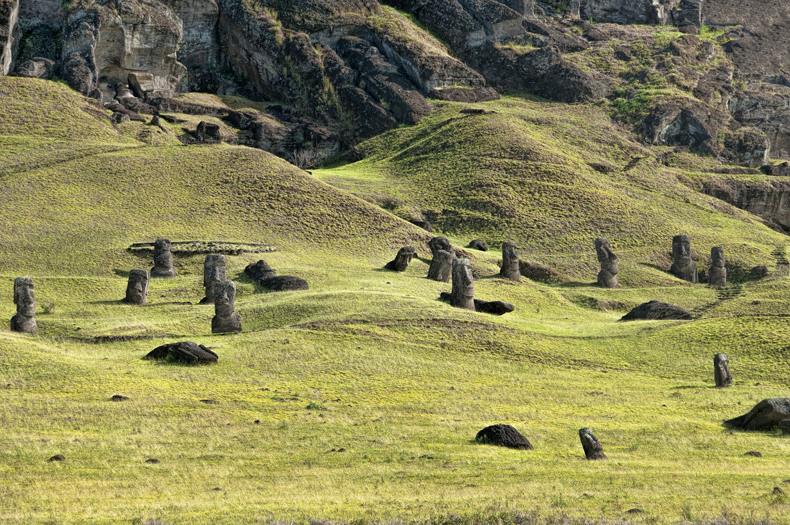
Easter Island was a cultural "hotspot" at a time when the rest of the world was wallowing in the Dark Ages. Its people were well fed, society tightly organized, and religion highly sophisticated. This enigma has intrigued the West for centuries. Why Easter Island, of all places, the most isolated society on the planet, perched atop a tiny and marginal volcanic rock.
But after the enviable burst of creative activity in the 1600's the cultural flower wilted, almost overnight, in a strange manner that still has anthropologists' heads spinning. Most agree, however, that environmental decay, and possibly genocide, played an important role in the sudden collapse. How so?
Society on Easter Island centered around a dozen or so clans, each ruled by a chief. Since food, mostly sweet potatos and chicken, was easily attained, there was ample time for matters of the spirit. A complex form of ancestor worship evolved. Ancestors were believed to provide for the people's health and prosperity in exchange for offerings and ceremony.
Each clan, at the behest of its chief, constructed ceremonial platforms called ahu upon which they erected the giant statues for which the island is so famous. These statues represented incarnations of ancestral chiefs and were extremely important in clan worship. But it was the carving and transport of these massive moia which played such a pivotal role in the story of Easter Island. (next photo)